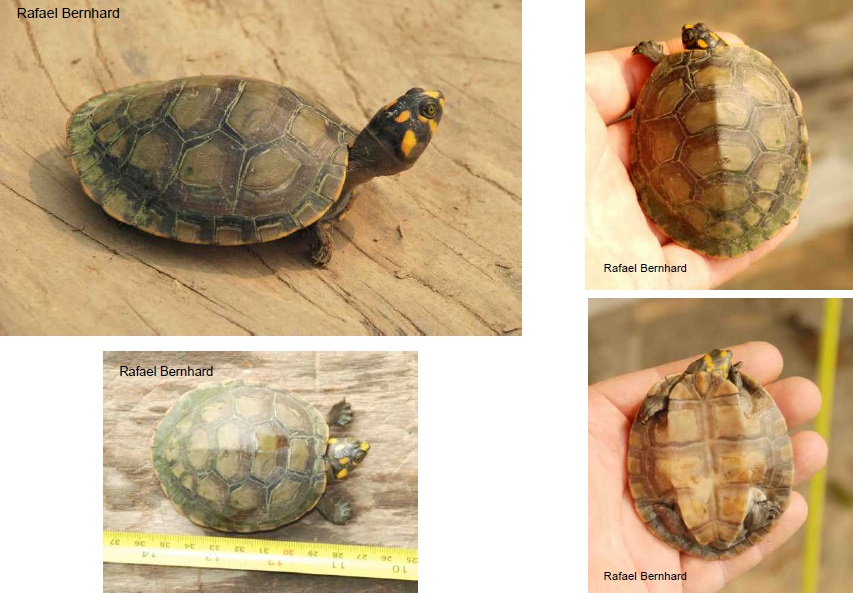 Português
Português English
English
Languages
Podocnemis unifilis

Family: PODOCNEMIDIDAE
Scientific Name: Podocnemis unifilis
Common Name: Yellow- Spotted Amazon River Turtle
Local Nome: tracajá, tracajoa (females) e zé-prego (males).
Length and weight: Up to 35cm in length and 6 kg.
Species characteristics: males are smaller than females and have a narrower carapace and longer, thicker tail. Sub-adults have yellow spots on the head. The head colour in females becomes a rusty brown with age. In some males the head colour pattern may be lost.
Habitat: They live in a variety of habitats such as, large rivers, lakes, oxbow lakes, marshes, swamps and lagoons. Occur in three types of Amazonian rivers, white water, clear water and black water.
Diet: Predominantly herbivorous. I.e. feed on plants (fruits, stems, leaves, seeds and algae). The females eat more fruits and seeds, while males eat more grass stems.
Reproduction: the spawning season varies from June to February according to the location in the Amazon because spawning is dependent on decreasing water levels not the time of year. Females spawn once or twice in a season and produce about 35 to 40 eggs. The sex of the hatchlings is determined by incubation temperature.
The main threat to this species is the massive consumption and sale of adults, young and eggs. In addition some populations of turtles in the basins of the Madeira and Tapajos rivers have been contaminated by mercury (Hg) which is normally associated with gold mining.


